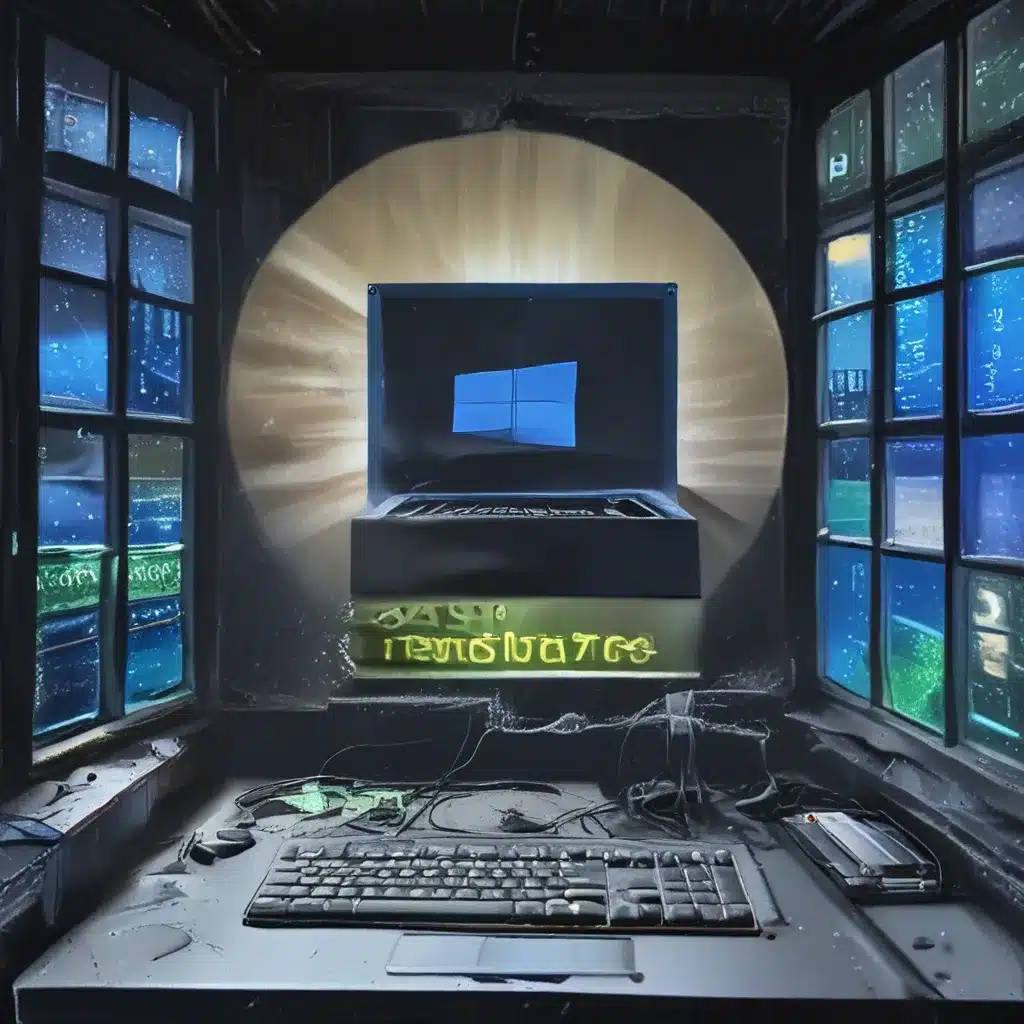
A Comprehensive Guide to Reviving Your Windows PC
Have you ever experienced that sinking feeling when your beloved Windows PC starts acting up? Maybe it’s a mysterious blue screen, an app that refuses to launch, or a system that just seems to have lost its mojo. Well, fear not, my friend – the solution to your woes may lie in the powerful yet often overlooked Windows System Restore feature.
Understanding System Restore
Now, I know what you’re thinking – “System Restore? Isn’t that something my grandma used to do?” Well, let me tell you, this handy little tool has come a long way since the olden days. In fact, it’s a critical part of Windows that can mean the difference between a smooth-sailing PC and a complete system meltdown.
You see, System Restore is like a time machine for your computer. It allows you to rewind your system to a previous, stable state, effectively undoing any changes that may have been the root cause of your issues. Think of it as a safety net – you can take a leap of faith, knowing that if things go sideways, you can simply hit the reset button and get back to where you started.
When to Use System Restore
But when should you actually use System Restore? Well, the answer is: any time you suspect that a recent change to your system might be causing problems. Maybe you installed a new program that’s been causing crashes, or perhaps you made a tweak to your settings that’s left your computer in a bit of a pickle. System Restore can be your knight in shining armor, swooping in to save the day.
According to the Seven Forums tutorial, System Restore can also be a lifesaver when dealing with issues related to the Master Boot Record (MBR) – that crucial piece of code that tells your computer where to find the operating system. If the MBR gets corrupted or overwritten, your system may not be able to boot up properly. But with System Restore, you can roll back the clock and restore the MBR to a known-good state.
How to Use System Restore
Alright, so now that we’ve established the importance of System Restore, let’s dive into the nuts and bolts of how to actually use it. The process is pretty straightforward, but there are a few key steps to keep in mind.
First and foremost, you’ll want to make sure that System Restore is actually enabled on your machine. You can check this by going to the Start menu, typing “System Restore,” and opening the System Restore tool. If the feature is turned off, you’ll want to turn it back on, as it won’t be able to do its magic if it’s not active.
Next, you’ll need to create a restore point. This is essentially a snapshot of your system at a specific point in time, which you can then use as a reference point for your restoration. You can create a restore point manually by going to the System Restore tool and clicking the “Create a restore point” option.
Now, when disaster strikes and you need to roll back your system, simply head back to the System Restore tool, select the restore point you want to use, and let the magic happen. As Microsoft’s support page explains, the process of resetting your PC can be a great way to refresh your system and improve its performance, security, and overall user experience.
Restoring the Master Boot Record
Of course, there may be times when your system issues are a bit more severe, and you need to address the dreaded MBR. As the Microsoft Answers forum explains, you can use a Windows installation disc or USB drive to boot into the recovery environment and restore the MBR. This process can be a bit more technical, but with a little patience and the right know-how, you can have your system back up and running in no time.
Conclusion
So there you have it, folks – the ultimate guide to mastering Windows System Restore. Whether you’re dealing with a pesky software issue or a stubborn MBR problem, this powerful tool can be your ticket to a smooth, stress-free computing experience. And who knows, maybe it’ll even save you from having to call in the IT professionals at ITFix (though they’re always happy to lend a hand if you need it).
Happy restoring, and may your Windows PC always be as good as new!












